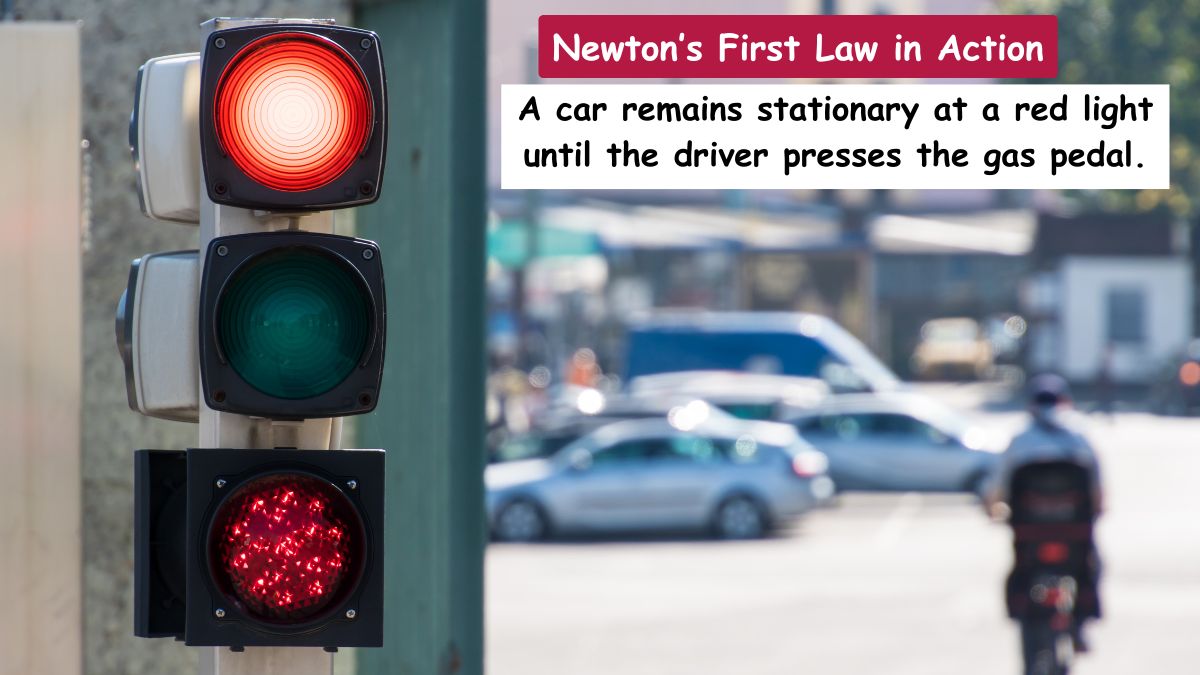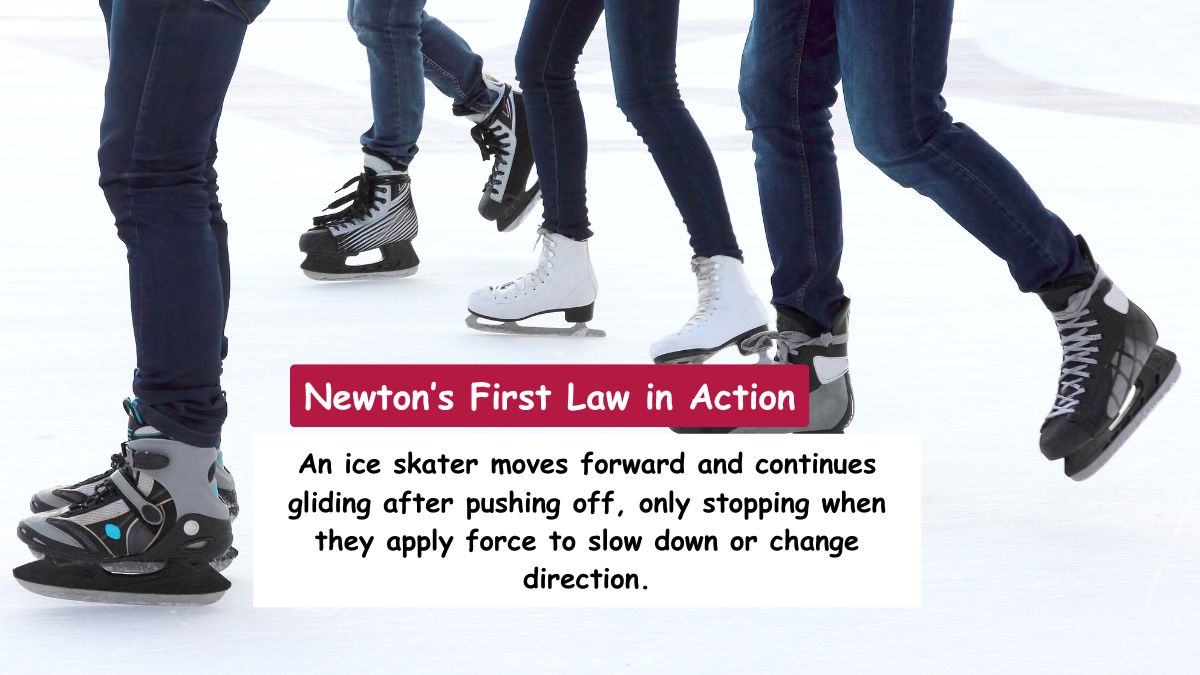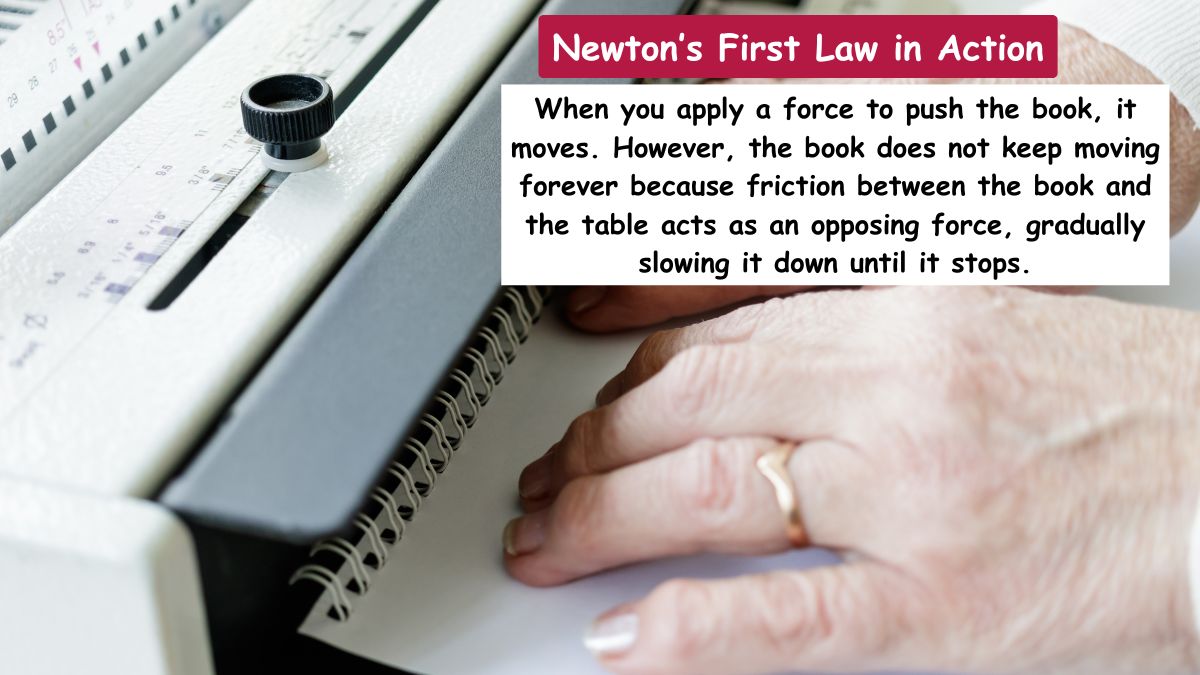Newton’s First Law of Motion, also known as the Law of Inertia, states that an object will remain at rest or continue moving in a straight line at a constant speed unless acted upon by an external force. This principle explains why objects resist changes in their motion. From everyday actions like driving a car to natural phenomena like a swinging pendulum, inertia plays an important role in how things move and stop.
Below are examples of Newton’s First Law, showing how this fundamental concept applies in daily life. These real-life examples of Newton’s First Law highlight the various ways objects maintain their state of motion unless influenced by an external force. Each Newton’s First Law of Motion example serves as a clear law of inertia example, demonstrating the effects of unbalanced forces on different objects.
Examples of Newton’s First Law of Motion
Here are 10 examples of Newton’s First Law of Motion in everyday life. This law, also known as the Law of Inertia, states that an object remains at rest or in uniform motion unless acted upon by an external force.
1. Car at a Stoplight
A car remains stationary at a red light until the driver presses the gas pedal.
Newton’s First Law in Action: The car stays at rest due to inertia, meaning it will not move unless a force is applied. When the driver presses the gas pedal, the engine generates a force that propels the car forward. Similarly, when the driver removes their foot from the gas pedal, the car does not stop immediately; it continues moving forward due to inertia until friction from the road and air resistance slows it down.

2. Ice Skating
An ice skater moves forward and continues gliding after pushing off, only stopping when they apply force to slow down or change direction.
Newton’s First Law in Action: Ice has very little friction, which allows the skater to move smoothly in a straight line. Once in motion, the skater remains in motion unless they use their skates to stop or an external force, like friction with the ice, slows them down. If no force acted upon them, they would continue moving indefinitely in the same direction.

3. Pushing a Book
A book slides across a table when pushed but eventually comes to a stop.
Newton’s First Law in Action: When you apply a force to push the book, it moves. However, the book does not keep moving forever because friction between the book and the table acts as an opposing force, gradually slowing it down until it stops. If friction were eliminated, such as on a smooth ice surface, the book would continue moving much longer before stopping.

4. Swinging Pendulum
A pendulum swings back and forth but eventually stops moving.
Newton’s First Law in Action: When a pendulum is set in motion, it continues to swing due to inertia. However, air resistance and friction at the pivot point gradually slow it down, causing it to stop over time. In a vacuum, where there is no air resistance, the pendulum would continue swinging indefinitely.
5. Space Travel
Objects in space move at a constant velocity unless an external force changes their motion.
Newton’s First Law in Action: In the vacuum of space, there is no air resistance or friction to slow down an object. If an astronaut throws an object, it will continue moving in the same direction at a constant speed unless acted upon by another force, such as gravity or a collision with another object. This is why spacecraft continue traveling long distances after their engines are turned off.
6. Soccer Ball at Rest
A soccer ball remains still on the field until a player kicks it.
Newton’s First Law in Action: The soccer ball does not move unless an external force, such as a player’s kick, is applied. Once kicked, the ball continues rolling due to inertia. However, it eventually slows down and stops due to friction with the grass and air resistance. If these forces were absent, the ball would continue moving indefinitely.
7. Roller Coaster
A roller coaster at the top of a hill remains there until gravity pulls it downward.
Newton’s First Law in Action: The roller coaster remains at rest until an external force acts upon it. When the ride reaches the top of the track, gravity acts as the unbalanced force that pulls the coaster down the hill. Once in motion, it continues moving forward due to inertia until friction, air resistance, and brakes bring it to a stop.
8. Blood Rushes in an Elevator
When an elevator stops suddenly, passengers feel their blood rush downward.
Newton’s First Law in Action: The fluids inside the human body, including blood, follow the principle of inertia. When an elevator stops suddenly, the body comes to a stop, but the blood inside continues moving downward momentarily. This creates a sensation of blood rushing toward the feet. The same effect happens when a fast-moving elevator starts suddenly—blood momentarily shifts upward due to inertia.
9. Hammer Head Tightening
The head of a loose hammer can be tightened by striking the bottom of the handle against a hard surface.
Newton’s First Law in Action: When the handle is struck against a surface, the hammerhead remains in motion due to inertia, even as the handle stops abruptly. This motion causes the head to slide further onto the handle, tightening the fit. This principle is commonly used by carpenters to secure a loose hammerhead.
10. Parachutist Jumping from an Airplane
A parachutist falls freely after jumping from a plane but eventually reaches a constant speed due to air resistance.
Newton’s First Law in Action: When the parachutist exits the airplane, they continue falling due to the force of gravity. Initially, they accelerate because there is little air resistance. However, as their speed increases, air resistance builds up, eventually balancing the gravitational pull. This results in terminal velocity, where the parachutist continues falling at a constant speed rather than accelerating indefinitely.

